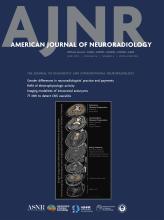Case of the Week
Section Editors: Matylda Machnowska1 and Anvita Pauranik2
1University of Toronto, Toronto, Ontario, Canada
2BC Children's Hospital, University of British Columbia, Vancouver, British Columbia, Canada
Sign up to receive an email alert when a new Case of the Week is posted.
April 13, 2017
Candida Microabscess
- Background:
- Candida albicans is a yeast with pseudohyphae. It is the most common nosocomial and intrauterine/neonatal fungal infection.
- In utero, chorionic ascending and intrapartum vaginal infections are common routes of prenatal infections.
- Predisposing factors for postnatal infection are very low birth weight and antibiotic and steroid therapy.
- Preterm infants and those with indwelling catheters, such as umbilical venous catheters, are also predisposed.
- Clinical Presentation:
- Fever, meningeal signs, seizures
- Key Diagnostic Features:
- MRI: hyperintense punctate foci on T1 and variable signal on T2, showing nodular enhancement; diffusion restriction patterns are variable; candida CNS infections can present as basal meningitis, which will show variable meningeal enhancement with “dirty” CSF
- Complications include hydrocephalus, ventriculitis, septic arteritis and thrombophlebitis, hemorrhage, and mycotic aneurysm.
- Differential Diagnoses:
- Periventricular leucomalacia: no enhancement; low APGAR score
- CMV: periventricular and basal ganglia calcifications; polymicrogyria may also be associated.
- Neonatal stroke in neonates: there is no contrast enhancement and frequently there will be a history of congenital cardiac disease.
- Pyruvate dehydrogenase deficiency: bilateral periventricular T1 hyperintensity with blooming on GRE, dysplastic corpus callosum, dilated lateral ventricles, and cerebral atrophy; laboratory exams reveal lactic acidosis is evident.
- Treatment:
- Amphotericin B and fluocytocine











